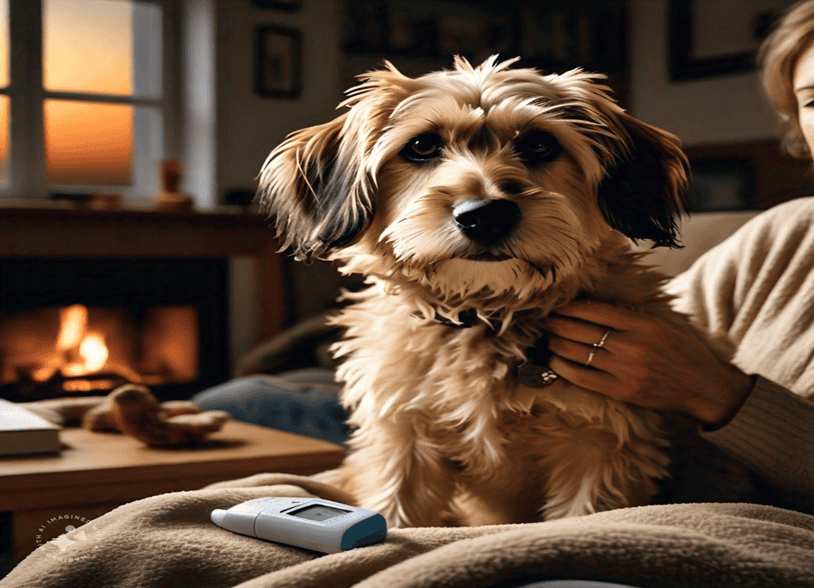Fleas are a common problem for many dog owners. These tiny parasites can cause a range of issues for our furry friends, from itching and discomfort to more severe conditions like flea allergy, dermatitis and anemia. While traditional flea treatments like baths, topical applications, and oral medications are effective, not all dogs can handle frequent bathing. Whether due to a fear of water, sensitive skin, or medical conditions, some dogs require alternative solutions for flea control.
We’ll explore various home remedies to help control fleas on dogs without the need for bathing. These natural methods are safe, effective, and perfect for dogs who can’t be bathed regularly. We’ll also discuss how to maintain a flea-free environment and share some real-life success stories. Let’s dive in!
Fleas are small, wingless insects that live on the skin of animals, feeding on their blood. For dogs, fleas are more than just a nuisance—they can cause intense itching, allergic reactions, and even transmit diseases like tapeworms. Fleas have a quick reproduction cycle, making it crucial to act fast at the first sign of an infestation.
Understanding the life cycle of fleas is key to breaking the infestation. Fleas go through four stages: egg, larva, pupa, and adult. Effective flea control must target all stages to prevent reinfestation and protect your dog’s health.
While bathing can help reduce fleas, it’s not always a viable option for every dog. Frequent bathing can strip the skin of natural oils, leading to dryness and irritation. Moreover, some dogs have a fear of water, making bath time a stressful experience for both the dog and the owner. Additionally, dogs with certain medical conditions, such as skin infections or wounds, may require alternative flea treatments.
For these reasons, it’s important to consider non-bathing methods for flea control that are gentle yet effective.
There are several natural remedies that can help control fleas on dogs without the need for bathing. These methods utilize ingredients that are safe for dogs, easy to use, and readily available.
Diatomaceous earth (DE) is a fine, powdery substance made from the fossilized remains of tiny aquatic organisms called diatoms. DE is effective at killing fleas by dehydrating them. It works by piercing the exoskeleton of fleas, causing them to dry out and die.
Apple cider vinegar is known for its flea-repellent properties. Its acidic nature creates an environment on your dog’s skin that fleas find unappealing. ACV is also beneficial for improving coat health and adding shine.
Certain essential oils, such as lavender, peppermint, eucalyptus, and cedarwood, are known for their flea-repelling properties. These oils can be used to make a natural flea spray that is both effective and pleasant-smelling.
Regular flea combing is a simple yet effective way to reduce flea populations on your dog. A flea comb has fine teeth that can capture fleas and flea dirt.
Vacuuming is crucial for removing fleas, larvae, and eggs from your home environment. Focus on carpets, upholstery, and pet bedding.
Coconut oil is a natural flea repellent and can also soothe irritated skin caused by flea bites. It contains lauric acid, which kills fleas on contact.

Effective flea control requires treating both your dog and the surrounding environment. Fleas can live in carpets, furniture, and bedding, so it’s essential to maintain a clean home.
While natural remedies can be effective, they are not a substitute for professional veterinary care. Always consult your vet before trying new treatments, especially if your dog has allergies or underlying health conditions.
If any adverse reactions occur, discontinue use immediately and consult your veterinarian.
Dr. Laura Thompson, a holistic veterinarian, advises that natural remedies can be effective but should be part of a broader flea control strategy. She emphasizes the importance of treating the environment and considering the individual dog’s health when choosing a treatment.
Yes, but always consult with a vet first. Puppies and elderly dogs may have more sensitive skin and could react differently to certain treatments.
Frequency depends on the treatment. Some remedies, like flea combing, can be done daily, while others, like coconut oil, may only be needed once a week.
Yes, essential oils must be diluted properly and used with caution. Some dogs may be sensitive or allergic, and certain oils can be toxic if ingested.
Contact your veterinarian immediately if your dog ingests any product not meant for consumption.

While fleas are a common problem, they don’t have to be a constant battle. You can help control fleas on your dog without the stress of frequent bathing by using these natural, home remedies. Maintaining a clean environment is just as important as treating your dog directly. Always keep your pet’s safety in mind and consult with a vet to ensure that these remedies are appropriate for your dog.
At The Dog House Pet Salon, we are dedicated to helping pet owners keep their furry friends healthy and happy. If you’ve tried any of these home remedies or have other tips for flea control, we’d love to hear from you! Share your experiences in the comments below.
For more pet care tips and advice, subscribe to our blog and visit us at The Dog House Pet Salon. Discover our range of professional grooming services and expert guidance on keeping your pets flea-free and comfortable all year round!